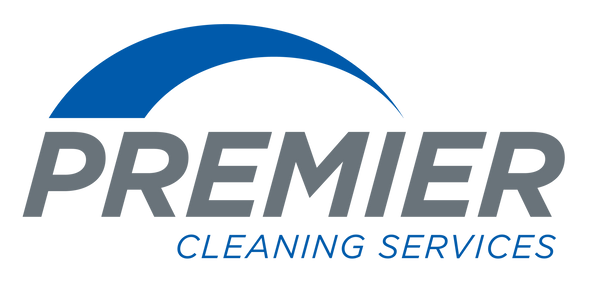Introduction
In the modern workplace, health and safety have become paramount concerns for employers and employees alike. As we spend a significant portion of our lives at work, maintaining a clean and sanitary environment is not just a matter of aesthetics, but a crucial element in ensuring the well-being of all personnel. In this blog post, we will explore the intricate relationship between cleanliness and workplace health and safety, delving into the ways in which a tidy workplace contributes to a healthier and safer work environment.
The Link Between Cleanliness and Health
Reducing the Spread of Illness
The CDC (Centers for Disease Control) states that one of the most evident ways cleanliness assists health in the workplace is by reducing the spread of illness. Common areas like break rooms, restrooms, and shared workspaces are breeding grounds for bacteria and viruses. Regular cleaning and sanitizing practices can significantly decrease the risk of employees falling ill and transmitting diseases to their colleagues.
Respiratory Health
Dusty and cluttered workplaces can lead to respiratory issues. Airborne particles like dust, allergens, and mold spores can aggravate allergies and respiratory conditions such as asthma. A clean workspace with proper ventilation helps mitigate these risks and promotes better respiratory health among employees.
Mental Health Benefits
A clean and organized workspace can also have positive effects on mental health. Clutter and disorganization can create stress and anxiety for employees. Conversely, a tidy environment promotes a sense of control and reduces feelings of overwhelm. This, in turn, can lead to increased job satisfaction and overall well-being. For more information on the effects a clean workplace can have on employee satisfaction, visit our blog post on the subject.
Safety First – How Cleanliness Enhances Workplace Safety
Preventing Slips, Trips, and Falls
Slips, trips, and falls are some of the most common workplace accidents. Cluttered floors, spills, and debris can easily lead to these accidents. Regular cleaning and maintaining clear walkways are essential steps in preventing these incidents.
Fire Safety
A clean workplace is also crucial for fire safety. Accumulated dust and clutter can be flammable, increasing the risk of fires. Moreover, clean and well-maintained fire exits and fire extinguishers are essential for a quick and safe evacuation in case of an emergency.
Equipment Maintenance
Cleanliness plays a vital role in ensuring the proper functioning of equipment and machinery. Regular cleaning and maintenance not only extend the lifespan of equipment but also reduce the risk of accidents due to equipment malfunctions.
How to Maintain a Clean and Safe Workplace
Establish Clear Cleaning Protocols
To maintain cleanliness in the workplace, it’s essential to establish clear cleaning protocols. This includes specifying responsibilities, scheduling regular cleaning sessions, and providing necessary cleaning supplies.
Invest in Proper Ventilation
Proper ventilation is crucial for maintaining good air quality and preventing respiratory issues. Ensure that the workplace has adequate ventilation systems in place to circulate clean air and remove pollutants.
Educate and Train Employees
Employees should be educated about the importance of cleanliness and how it relates to their health and safety. Training programs can help them understand proper cleaning techniques, hygiene practices, and safety protocols.
Encourage Personal Responsibility
While janitorial staff and cleaning services are essential, promoting personal responsibility for cleanliness among employees is equally important. Encourage everyone to clean up after themselves, dispose of waste properly, and report any safety hazards they encounter.
The Economic Benefits of a Clean Workplace
Increased Productivity
A clean and organized workplace fosters productivity. When employees are not distracted by clutter and are comfortable in their surroundings, they can focus better on their tasks, leading to increased efficiency and output.
Reduced Absenteeism
A cleaner workplace leads to healthier employees. When illness is less likely to spread due to cleanliness practices, absenteeism rates decrease, resulting in a more consistent and reliable workforce.
Improved Company Image
A clean and safe workplace reflects positively on a company’s image. It not only impresses clients and visitors but also attracts and retains top talent. A reputation for maintaining a clean and safe environment can be a valuable asset in today’s competitive job market.
The Power of Professional Cleaning Services
In order to keep your building clean and sanitary, consider hiring a professional cleaning service on a regular or occasional basis. Professional cleaners are trained on up-to-date cleaning protocols as well as various cleaning requirements based on the industry they are currently serving. They use quality chemicals, techniques, and equipment, and work with you to find a cleaning solution to suit your specific business needs.
Conclusion
A clean workplace is not just a matter of aesthetics; it is fundamental to the health and safety of employees. By reducing the spread of illness, preventing accidents, and enhancing overall well-being, cleanliness plays a pivotal role in creating a positive work environment. Employers who prioritize cleanliness and hygiene will not only enjoy the economic benefits of increased productivity and reduced absenteeism but will also foster a culture of safety and well-being that benefits both the company and its workforce.
Interested in building a lasting business relationship with a reputable cleaning company? Contact Premier Cleaning Services today to request a free estimate.

